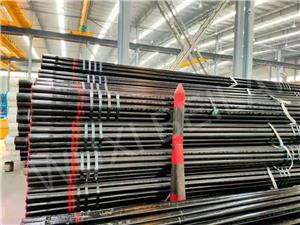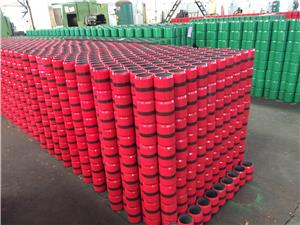How to control the quality of seamless steel pipe?
Seamless steel pipes are an important part of various engineering projects, and their quality and performance are critical to the success and reliability of the project. In order to ensure the quality of seamless steel pipes, strict quality control processes and compliance with relevant standards are indispensable. Do you know how to control the quality of seamless steel pipes in the production process?
Raw material inspection:
The manufacturing process of seamless steel pipes begins with the selection of raw materials. The raw material is usually billet, which needs to undergo a rigorous chemical composition analysis to ensure that it meets the relevant standards. This includes the detection of carbon content, alloying element content, and other important elements. In addition, mechanical properties tests such as tensile strength, yield strength and impact toughness tests are also necessary to verify the properties of raw materials.
Manufacturing process control:
The complete seamless steel pipe manufacturing process covers several key steps, including perforation, extrusion, heat treatment, cold drawing or drawing. During these processes, the factory must implement strict control measures to ensure the quality and consistency of the products. The perforation process requires accurate control to ensure the exact size and position of the hole. The extrusion process must ensure that the internal and external diameter of the pipe, wall thickness and other parameters meet the standard. The temperature, time and cooling speed of the heat treatment need to be carefully controlled to adjust the crystal structure of the steel and improve the mechanical properties. The cold drawing or drawing process also needs to be monitored to ensure the internal and external surface quality of the pipe.
Size and wall thickness detection:
A variety of measuring tools, such as micrometer, gauge, wall thickness measuring instrument, etc. are used to detect the size, wall thickness and outside diameter of seamless steel pipes. This is a key step to ensure that the dimensions of the product meet the relevant standards.
Non-destructive testing:
Seamless steel pipes are usually subjected to non-destructive testing to detect surface and internal defects such as cracks, pores and inclusions. Common nondestructive testing methods include ultrasonic testing, X-ray testing and magnetic particle testing. These methods are able to detect potential problems without damaging the material.
Mechanical properties test:
The mechanical properties of seamless steel tubes, such as tensile strength, yield strength and impact toughness, are often tested to ensure that products meet design and safety standards. These tests help verify the strength and toughness of the material.
Chemical analysis:
Chemical composition analysis is performed to verify that the material composition of the seamless steel pipe meets the requirements of the manufacturing standard. This is an important step to ensure the chemical stability of the pipe material.




